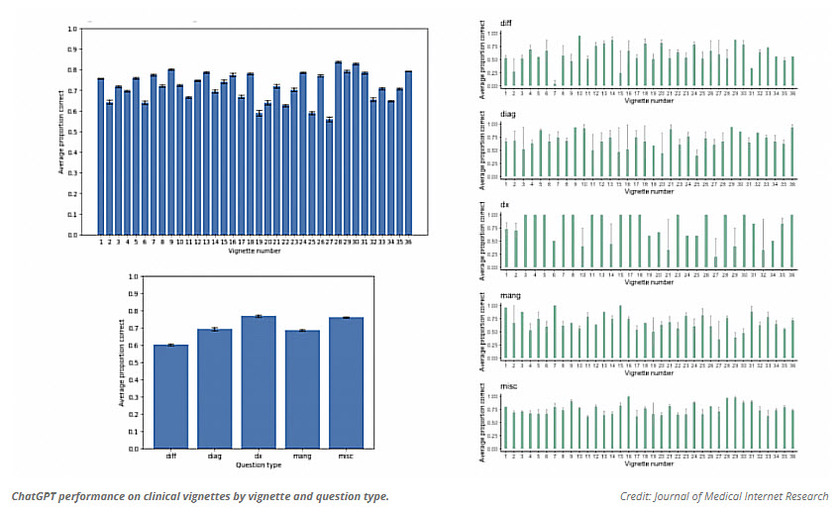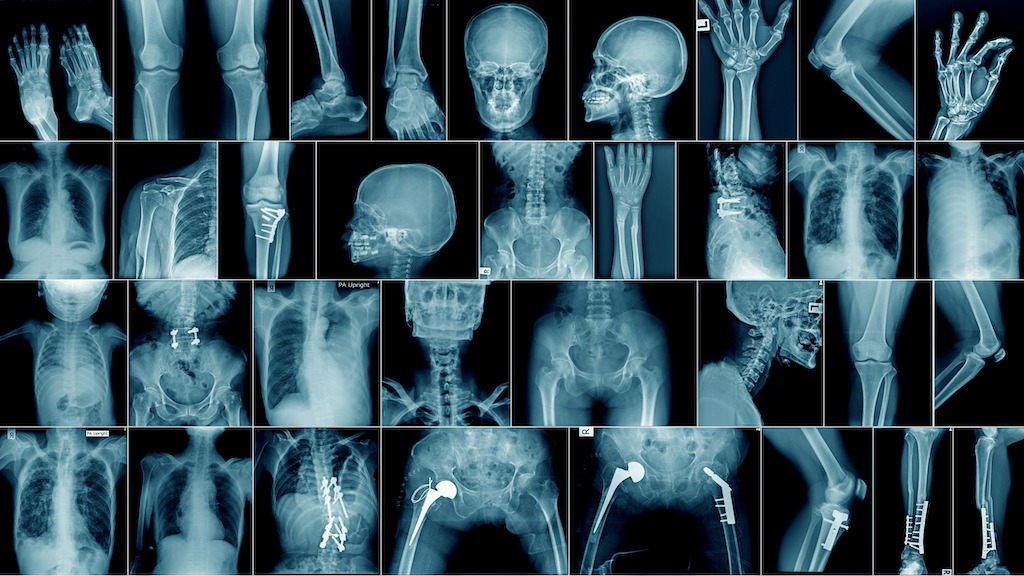The following is the continuation of the article:
"Will we ever understand animals' feelings?
As we've previously touched upon, while we can make some qualitative and quantitative observations of animals and their behavior, it is very difficult to know for sure what an animal is actually "feeling" in its brain. In fact, it might be the case that most animals don't actually "feel" emotions at all.
Feelings like pain, hunger, thirst, fear, envy, are quite common in the animal kingdom, but these are more basic reactions to a situation rather than emotions per se. However, there does appear to be a correlation in the animal world between the presence of other, less instinctual mental processes, and complex social networks.
Elephants, dogs, and primates, for example, show some close similarities with human beings in their mental functions. This shouldn't come as much of a surprise, as these are all social animals, like humans.
Empathy, or something very close to it, seems to be quite common in animals that live in social groups of one kind or another. This makes sense, as it would be evolutionarily beneficial to actually "care" for other members of your own species, especially close relatives.
This is probably a very important factor in the evolution of our own species too, laying the foundations for what would day become the earliest civilizations.
If other animals have the capacity for empathy, or their version of it, then does this mean they are able to experience other emotions, perhaps even perform some higher brain functions that we might recognize as thinking? Some believe so. However, as is often warned in many fields of science, we have to be very careful not to "anthropomorphize" another species and its behaviors.
Our species is, to put it bluntly, very special indeed. No other species on the planet is able to perform the level of thinking that we can and create both functional (i.e. useful tools) and artistic objects (i.e. non-vital or luxury objects) on the scale and size we have throughout our history.
In fact, the latter, the apparent "need" to create art is a uniquely human affair that has not genuinely been observed in any other living creature on Earth. We may never really know why art arose as a phenomenon, but it is clear that it requires some form of "theory of mind" as a prerequisite - i.e. art is made to be seen and admired by others.
While some form of creativity has been observed in other animals, like elephants, it is hotly debated if this is "real" or a "trained" behavior.
Additionally, while other animals can change their environment to some extent, either directly or indirectly, this pales in comparison to what our species can do consciously. But we have a rather unfair advantage over other animals in this respect - our extraordinarily large brains compared to our body size.
Human beings have an encephalization quotient (EQ) in the order of 7.5. Encephalization is the relative brain size of an animal, measured as the ratio between actual brain size and predicted brain mass for an animal of a given size. For example, larger animals can be expected to have larger brains. Values greater than 1.0 indicate a larger brain than expected for that body size.
To put that figure into perspective, chimps have an EQ of around 2.5, cats have an EQ of 1.0, and bottlenose dolphins have an EQ of 5.3. All well and good, but human brains are also quite literally, wired differently.
Something called the FOXP2 gene is present in most species. This gene provides instructions for making a protein that controls the activity of other genes. This protein, in effect, acts as a dimmer switch which helps determine to what extent other genes are expressed. Mutations in this gene have also been linked to the development of the brain's language and speech networks.
This has been verified in the lab by artificially altering the gene to find out what happens. In mice, for example, genetic manipulation of the gene shows a marked reduction in the vocalization of mice pups.
About 200,000 years ago, a mutation in this gene appears to have occurred in our species, becoming commonplace in our population within only 1,000 generations. It was clearly a beneficial mutation.
"The consensus among scientists is that the FOXP2 gene has been the target of heavy selection during recent human evolution because it changed the way our brain was wired for communication," explains Denise D. Cummins, a cognitive scientist, in a Scientific American article. And this really is critical.
Our brains have also become highly specialized, with certain regions dedicated to processes like language to a much greater degree than in other animals, like chimps. However, this may have come at a very significant cost - our almost uniquely high susceptibility to mental disorders like schizophrenia.
We have taken a very different evolutionary pathway to pretty much all other animals on the planet. For this reason, our ability to communicate using things like languages is far beyond the capacity of any other animal. For this reason, many experts in the field are very confident we can never actually "talk" to other animals in any meaningful way.
So, it appears that begin able to actually "ask" an animal how it feels is looking pretty unlikely. Of course, this doesn't mean animals don't have emotions and feelings.
We are the product of the same evolutionary processes as every other creature on this planet. If we have emotions, and they clearly develop naturally, then it follows that other animals should have at least some feelings too, right?
But how would we ever be able to find out? Since talking to them is out, what else can we do?
Scientists have been attempting to learn how to communicate with animals for a very long time, with varying success. Our closest relatives, the great apes, have even shown some ability to pick up communication methods like sign language and provide some very basic level of interaction with human beings.
Pet owners will also be more than familiar with the ability to have some very basic interaction with their dog or cat, for example. In many instances, dogs, for example, can be trained to respond to some verbal commands.
However, it is important to note that this is more a case of your pet connecting a series of sounds, or a particular tone, with a good or bad outcome - like getting a treat or being punished in some way. It also works the other way around.
You innately understand the difference between a growling angry dog and a happy one, for example.
However, as we've previously discussed, codified language might be a uniquely human "software function" and trying to teach other animals how we communicate could be a forlorn hope. A better approach would be for us to learn how to speak "their" tongue.
Is this possible?
Sort of.
Researchers at the Georgia Institute of Technology, for example, have been able to develop a "computerized doggy vest" that, so they claim, allows humans to "talk" to dogs. Technically called "animal-computer interaction", this device has been developed to help assistance dogs ask for help if they, or their owner, get into trouble.
However, such a device is more of a trick that a dog can be taught to activate when needed. A far more sophisticated approach is currently in development by researchers at Northern Arizona University.
The team, led by Dr. Con Slobodchikoff, is working on a sophisticated algorithm that can "translate" animal sounds, body language, and expressions into human language when, for example, the animal is in pain or hungry, etc.
While very much in its infancy, such technology would prove revolutionary for human-animal interactions, but would still fall very short of being able to engage in a conversation. Magnetic resonance imaging (MRI) is another promising field, but this also relies on making analogies with human brains or associating observed behaviors with what can be seen in the scans.
Both of which involve the "use" of the very unique wiring seen in the human brain. This may be something of a "Catch 22," ultimately limiting research in this field.
So, while thinking and feeling are very common human traits, it is not clear if any other animal experiences the world as we do. While we do have a massive advantage, our huge brains, this may only enable us to think about the world as human beings do, not as animals do. In other words, our mental "hardware" and "software" might be incompatible with the way other animals think and see the world.
For this reason, it may be the case that we can never truly understand or communicate effectively with other animals on Earth, at least with our current understanding of what consciousness is.
But, if history is anything to go by, it may only be a matter of time before some major breakthrough in human-animal communication is made. We shall have to wait and see. "
So one day we all could be Dr. Doolittle and talk to the animals just to think of it we could discourse in chimpanzees."
Reference: https://interestingengineering.com/will-humans-every-be-able-to-talk-to-animals
I have lost a lot of faith with the Medical Community and the Governments over the last several years, but there are a few good things that can raise above the corruption and the pushing of drugs a new approach to heal people. The following is from www.gaia.com and written by Hunter Parsons that does not involve any drug or pushing an ineffective so called vaccine that the drug company is not held accountable in any way but they use sound! The use of sound can regrow bone tissue! Here is the story:
"The future of regenerative medicine could be found within sound healing by regrowing bone cells with sound waves.
The use of sound as a healing modality has an ancient tradition all over the world. The ancient Greeks used sound to cure mental disorders; Australian Aborigines reportedly use the didgeridoo to heal; and Tibetan or Himalayan singing bowls were, and still are, used for spiritual healing ceremonies.
Recently, a study showed an hour-long sound bowl meditation reduced anger, fatigue, anxiety, and ...
Not a fan of a Defense Agency studying Anti-Gravity and other Exotic Tech, but if the commercial world and make this technology cheap that will change our world yet again. The following is about three minute read and from www.gaia.com. The below was written by Hunter Parsons:
"Wormholes, invisibility cloaks, and anti-gravity — it’s not science fiction, it’s just some of the exotic things the U.S. government has been researching.
A massive document dump by the Defense Intelligence Agency shows some of the wild research projects the United States government was, at least, funding through the Advanced Aerospace Threat Identification Program known as AATIP.
And another lesser-known entity called the Advanced Aerospace Weapons System Application Program or AAWSAP
The Defense Intelligence Agency has recently released a large number of documents to different news outlets and individuals who have filed Freedom of Information Act requests.
Of particular interest are some 1,600 pages released to Vice News, which ...
As our technology gets better we are discovering more about the history of mankind and pushing the timeline back further and further. The following article is from www.gaia.com and written by Michael Chary that discusses this new find that changes the historical timeline:
"Over the past decade, there have been a number of archeological revelations pushing back the timeline of human evolution and our ancient ancestors’ various diasporas. Initially, these discoveries elicit some resistance as archeologists bemoan the daunting prospect of rewriting the history books, though once enough evidence is presented to established institutions, a new chronology becomes accepted.
But this really only pertains to the era of human development that predates civilization — the epochs of our past in which we were merely hunter-gatherers and nomads roaming the savannahs. Try challenging the consensus timeline of human civilization and it’s likely you’ll be met with derision and rigidity.
Conversely, someone of an alternative...
Not sure if you have heard of a show on YouTube called "The Why Files". If not you should check it out it is interesting and has some humor with it on different subjects. Last weeks was on a different theory how the Universe works and how main stream Science is attempting to shut it down like is always seems to do if it goes aguest some special interest. Today it is akin to what happened to those who questioned the Earth was the Center of the Universe that main stream so called Science all believed during the Renaissance period, They called any theory that the Earth was not the Center of the Universe misinformation. Does this sound familiar today? People laughed and mocked people like Leonardo da Vinci, Nicolaus Copernicus, Georg Purbach as crack-pots, conspiracy theorists, nut-jobs and they were suppressed and even imprisoned for their radical thoughts and observations. Again it sounds like today in so many ways. In any event this is a good one to ponder and see even if a bad idea ...
Seemingly chaotic systems like the weather and the financial markets are governed by the laws of chaos theory.
We all have heard about chaos theory, but if you have not or have forgotten what chaos theory is well here you go from interestingengineering.com:
"Chaos theory deals with dynamic systems, which are highly sensitive to initial conditions, making it almost impossible to track the resulting unpredictable behavior. Chaos theory seeks to find patterns in systems that appear random, such as weather, fluid turbulence, and the stock market.
Since the smallest of changes can lead to vastly different outcomes, the long-term behavior of chaotic systems is difficult to predict despite their inherently deterministic nature.
As Edward Lorenz, who first proposed what became commonly known as the Butterfly Effect, eloquently said, "Chaos: When the present determines the future, but the approximate present does not approximately determine the future.""
You may have heard the term about chaos theory as a butterfly flaps its wings in Brazil,...
I for one have lost trust in Medical Doctors due to COVID and reflection that they seem to push pills for everything and untested so called vaccines that is using a unproven technology because the Government and the Medical Boards of the State told them to. There are a very few exceptions. Thus they do not address the key problem just prescribe more and more pills to keep you alive an sick longer for them and Big Phama to profit from you. Will AI do any better? Well that depends on what was used for the training of AI. If it also pushes pills and vaccines without question then you have the same problems noted above. However, if the AI Training includes all possible forms of treatment and they zero in on the right issues for the true problem then there is possibilities they would be way better than most of the current Medical Doctors today.
The following is from an article from interestingengineering.com and written by Paul Ratner:
"A new study looks at how accurately AI can diagnose patients. We interview the researcher, who weighs in on AI's role ...

























